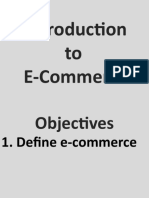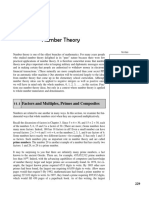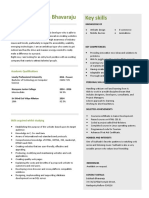0% found this document useful (0 votes)
31 views4 pagesE-Commerce Revision Notes
E-Commerce involves buying and selling goods and services over the internet, with various types including B2B, B2C, C2C, and more. It encompasses e-marketing techniques such as email marketing and social media, while also addressing security threats and ethical issues. Key components include electronic payment systems, website design principles, and customer strategies for effective online business operations.
Uploaded by
dhimansneha51Copyright
© © All Rights Reserved
We take content rights seriously. If you suspect this is your content, claim it here.
Available Formats
Download as PDF, TXT or read online on Scribd
0% found this document useful (0 votes)
31 views4 pagesE-Commerce Revision Notes
E-Commerce involves buying and selling goods and services over the internet, with various types including B2B, B2C, C2C, and more. It encompasses e-marketing techniques such as email marketing and social media, while also addressing security threats and ethical issues. Key components include electronic payment systems, website design principles, and customer strategies for effective online business operations.
Uploaded by
dhimansneha51Copyright
© © All Rights Reserved
We take content rights seriously. If you suspect this is your content, claim it here.
Available Formats
Download as PDF, TXT or read online on Scribd
/ 4




























































































